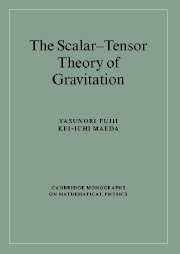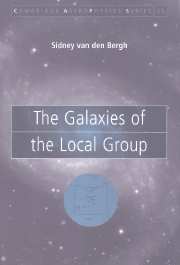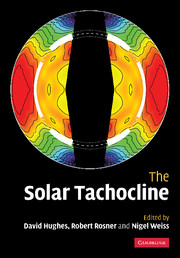Refine listing
Actions for selected content:
17000 results

The Scalar-Tensor Theory of Gravitation
-
- Published online:
- 24 August 2009
- Print publication:
- 02 January 2003

The Galaxies of the Local Group
-
- Published online:
- 22 August 2009
- Print publication:
- 15 May 2000

The Dark Universe
- Matter, Energy and Gravity
-
- Published online:
- 21 August 2009
- Print publication:
- 26 February 2004

Digital SLR Astrophotography
-
- Published online:
- 21 August 2009
- Print publication:
- 29 November 2007

The Solar Tachocline
-
- Published online:
- 21 August 2009
- Print publication:
- 31 May 2007
Chapter 11 - The terrestrial ionosphere at middle and low latitudes
-
- Book:
- Ionospheres
- Published online:
- 22 January 2010
- Print publication:
- 20 August 2009, pp 335-397
-
- Chapter
- Export citation
Appendix L - Scalars, vectors, dyadics, and tensors
-
- Book:
- Ionospheres
- Published online:
- 22 January 2010
- Print publication:
- 20 August 2009, pp 600-604
-
- Chapter
- Export citation
Appendix O - Numerical solution for F region ionization
-
- Book:
- Ionospheres
- Published online:
- 22 January 2010
- Print publication:
- 20 August 2009, pp 608-613
-
- Chapter
- Export citation
Frontmatter
-
- Book:
- Ionospheres
- Published online:
- 22 January 2010
- Print publication:
- 20 August 2009, pp i-vi
-
- Chapter
- Export citation
Chapter 1 - Introduction
-
- Book:
- Ionospheres
- Published online:
- 22 January 2010
- Print publication:
- 20 August 2009, pp 1-10
-
- Chapter
- Export citation
Appendix F - Maxwell transfer equations
-
- Book:
- Ionospheres
- Published online:
- 22 January 2010
- Print publication:
- 20 August 2009, pp 562-566
-
- Chapter
- Export citation
Chapter 4 - Collisions
-
- Book:
- Ionospheres
- Published online:
- 22 January 2010
- Print publication:
- 20 August 2009, pp 72-112
-
- Chapter
- Export citation
Appendix A - Physical constants and conversions
-
- Book:
- Ionospheres
- Published online:
- 22 January 2010
- Print publication:
- 20 August 2009, pp 548-549
-
- Chapter
- Export citation
Chapter 2 - Space environment
-
- Book:
- Ionospheres
- Published online:
- 22 January 2010
- Print publication:
- 20 August 2009, pp 11-49
-
- Chapter
- Export citation
Appendix B - Vector relations and operators
-
- Book:
- Ionospheres
- Published online:
- 22 January 2010
- Print publication:
- 20 August 2009, pp 550-553
-
- Chapter
- Export citation
Chapter 9 - Ionization and energy exchange processes
-
- Book:
- Ionospheres
- Published online:
- 22 January 2010
- Print publication:
- 20 August 2009, pp 254-288
-
- Chapter
- Export citation
Appendix G - Collision models
-
- Book:
- Ionospheres
- Published online:
- 22 January 2010
- Print publication:
- 20 August 2009, pp 567-574
-
- Chapter
- Export citation
Appendix M - Radio wave spectrum
-
- Book:
- Ionospheres
- Published online:
- 22 January 2010
- Print publication:
- 20 August 2009, pp 605-605
-
- Chapter
- Export citation
Appendix E - Systems of units
-
- Book:
- Ionospheres
- Published online:
- 22 January 2010
- Print publication:
- 20 August 2009, pp 560-561
-
- Chapter
- Export citation
Appendix I - Semilinear expressions for transport coefficients
-
- Book:
- Ionospheres
- Published online:
- 22 January 2010
- Print publication:
- 20 August 2009, pp 581-583
-
- Chapter
- Export citation
